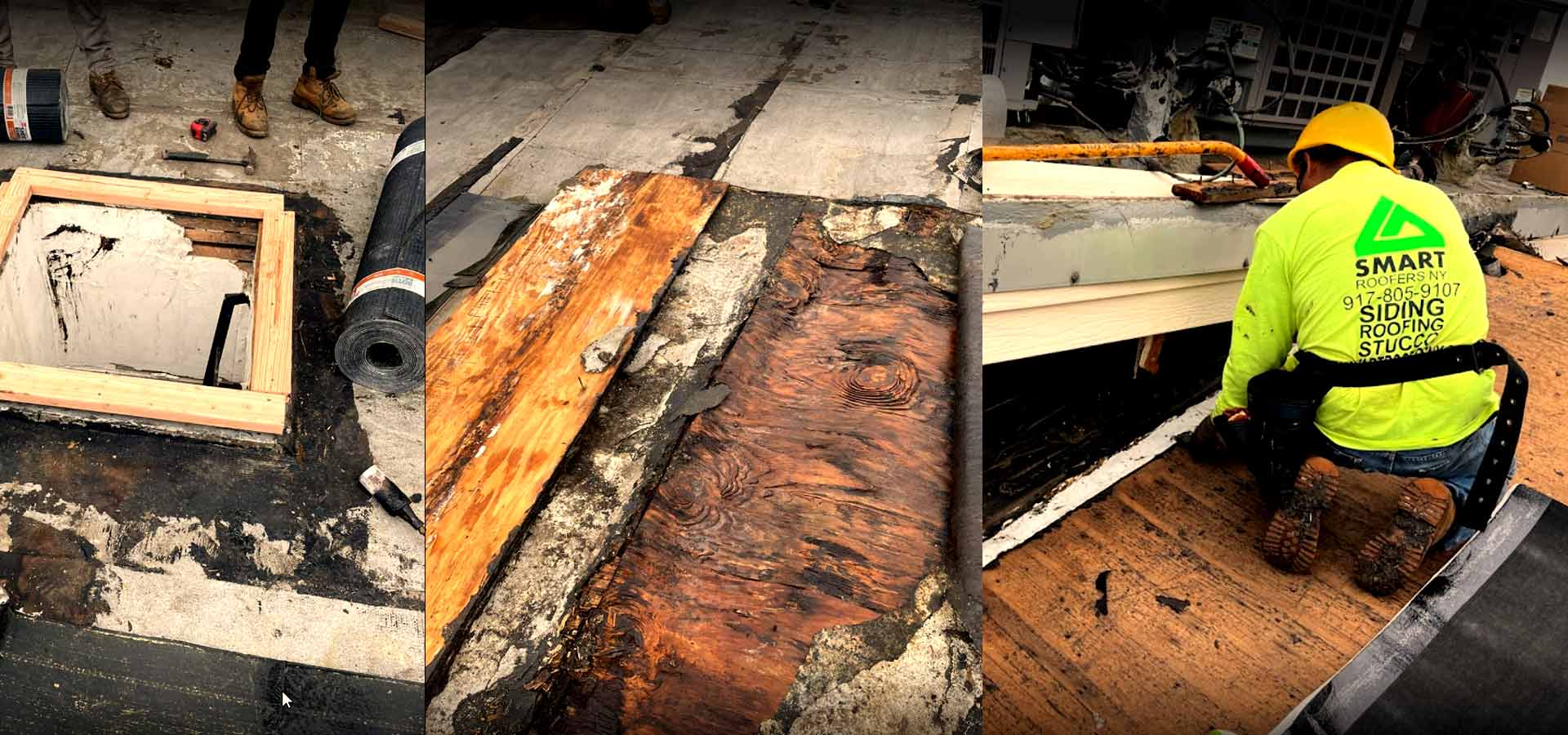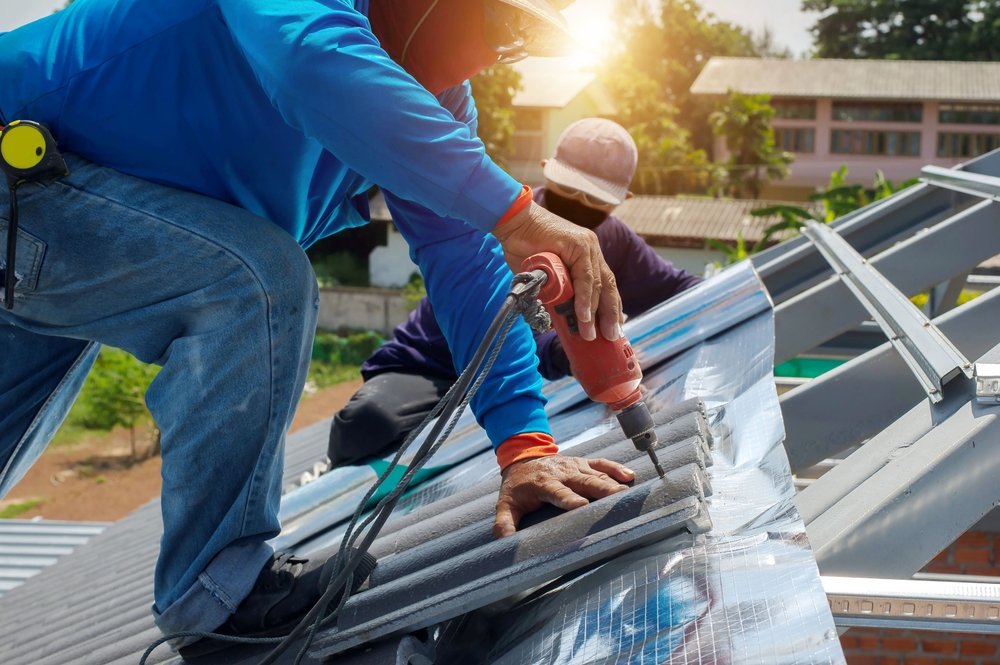Exploring the Different Kinds Of Roofing Systems: Which One Is Ideal for Your Home?
When taking into consideration the myriad kinds of roofing systems readily available, it is vital to evaluate exactly how each alternative lines up with your home's one-of-a-kind requirements, consisting of environment conditions, aesthetic choices, and architectural functionality. From the traditional gable roof that effectively networks rain to the modern flat roof covering offering urban versatility, each design offers distinct advantages and difficulties. In addition, the choice may substantially influence long-term maintenance and energy effectiveness. As you consider the very best suitable for your residence, it is essential to evaluate these aspects meticulously, particularly as some options may amaze you with their prospective benefits.
Gable Roof Coverings
Saddleback roofs, identified by their triangular form and sloping sides, are a prominent choice amongst home owners looking for both aesthetic appeal and capability. This roofing style effectively permits reliable water overflow, decreasing the risk of water merging and subsequent damage. In addition, the steep slopes develop sufficient attic room, which can be used for storage and even converted right into living locations.
One of the key advantages of saddleback roofs is their capacity to endure harsh climate condition. The layout assists in minimizing wind resistance, making them specifically suitable for locations prone to tornados. Additionally, gable roofs can be built using a range of materials, consisting of shingles, ceramic tiles, and steel, offering home owners with versatility in layout and budget plan.
From a building perspective, gable roof coverings can enhance the aesthetic allure of a home, using a classic and classic look. They can enhance various architectural designs, from traditional to contemporary layouts. However, it is important to take into consideration potential disadvantages, such as the sensitivity to snow accumulation in chillier environments. In general, gable roof coverings remain a popular option due to their balance of usefulness and style, attracting a vast range of home owners.
Flat Roofs
While frequently forgotten in support of more standard roof covering styles, level roofing systems use distinct benefits that cater to details architectural needs and contemporary layout choices. These roof coverings are defined by their minimal pitch, permitting reliable usage of area, specifically in urban atmospheres where taking full advantage of square video is necessary.
One considerable advantage of flat roofs is their convenience. They can be made use of as added space, such as roof yards, patios, or solar panel installations, improving the functionality of a home. Additionally, level roofing systems are usually much easier and more secure to browse during upkeep, facilitating repair work and examinations without the challenges positioned by high inclines.
Level roof coverings can additionally be much more economical in regards to products and setup. With an easier style, they commonly call for fewer resources, converting right into reduced labor expenses. Nevertheless, it's vital to think about drain and waterproofing, as level roof coverings can be prone to merging water otherwise appropriately made.

Hip Roof Coverings
Hip roof coverings stand apart for their sophisticated style and structural stability, making them a preferred selection among property owners. Identified by slopes on all four sides, hip roofs supply a healthy visual that enhances different building styles - roof repair oahu. The in proportion nature of these roofing systems helps to disperse weight evenly, enhancing security and toughness
Among the crucial benefits of hip roofings is their capacity to endure rough weather. The sloped surface areas help with efficient water drainage and snow drainage, decreasing the threat of leaks and architectural damages. Additionally, the layout lessens wind resistance, making hip roofing systems less susceptible to wind uplift compared to various other roof types.


Dropped Roof Coverings
Dropped roofing systems, in comparison to the intricacy of hip roof coverings, supply a minimal and structured design that interest modern-day visual appeals. Defined by a single sloping surface, lost roofs are usually utilized in contemporary design, yard sheds, and other functional frameworks. This simplicity not only boosts aesthetic charm yet likewise allows for efficient water overflow, making them appropriate for different climates.
Among the primary benefits of shed roofing systems is their cost-effectiveness. With less materials required and a simple setup process, homeowners can save both money and time. The style likewise allows the unification of huge home windows or skylights, advertising all-natural light and creating large insides.
Nonetheless, it is important to think about the possible drawbacks, including minimal insulation alternatives and the demand for cautious style to avoid extreme warm accumulation. In addition, dropped roofings may not blend effortlessly with traditional style, which could be an issue for some property owners.
Ultimately, lost roofings present a practical and stylish roofing option for those seeking modernity and performance. When choosing a roofing kind, evaluating individual functional needs and visual preferences will certainly direct homeowners to the most effective choice for their one-of-a-kind requirements.
Mansard Roofs
Mansard roofings, characterized by their unique four-sided design, are a trademark of French architecture that incorporates elegance with right here performance. This building style features two inclines on each side, with the lower slope being steeper than the top one. The unique setup enables for extra home in the top levels, making it a suitable selection for property owners seeking to make the most of functional area without expanding the structure's impact.
Among the substantial benefits of a mansard roofing system is its adaptability. It can be adapted to various architectural styles, from standard to modern-day, enhancing the aesthetic appeal of any type of home. Furthermore, the adequate room developed under the roofing can quickly fit dormer windows, which enable all-natural light and ventilation, further improving this page the comfort of the living area.
However, possible property owners must consider the maintenance demands connected with mansard roof coverings. Installment costs may be higher compared to less complex roofing styles due to the intricacy of construction.
Verdict
Each roof design presents one-of-a-kind advantages, such as the performance of these details gable roofs, the modern appeal of shed roofing systems, and the stability of hip roofing systems. Level roofs provide usefulness for urban settings, while mansard roofing systems provide added living area regardless of greater installation costs.
From the timeless gable roofing that efficiently networks rainwater to the contemporary flat roofing system offering city adaptability, each design provides unique benefits and difficulties (roof repair oahu). Furthermore, the style lessens wind resistance, making hip roof coverings much less susceptible to wind uplift compared to various other roofing system types
Lost roof coverings, in contrast to the intricacy of hip roofs, use a structured and minimalist layout that appeals to modern-day aesthetic appeals. Each roof covering style presents special benefits, such as the performance of gable roof coverings, the modern-day charm of shed roofing systems, and the security of hip roofings. Flat roof coverings supply functionality for urban environments, while mansard roofings give extra living room in spite of greater setup prices.